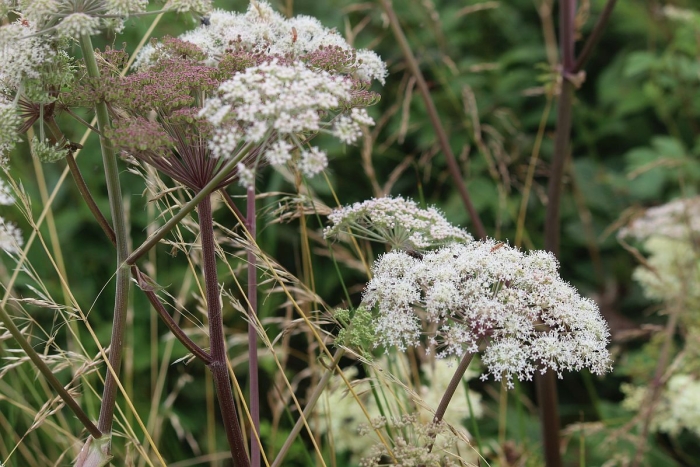Wild Angelica
(Angelica sylvestris)
Wild Angelica (Angelica sylvestris)
/
/

Andrew Thomas
CC BY-SA 4.0
Image By:
Andrew Thomas
Recorded By:
Copyright:
CC BY-SA 4.0
Copyright Notice:
Photo by: Andrew Thomas | License Type: CC BY-SA 4.0 | License URL: http://creativecommons.org/licenses/by-sa/4.0/ | Rights Holder: Andrew Thomas | Publisher: iNaturalist | Date Created: 2023-08-04T12:08:53-07:00 |






















Estimated Native Range
Summary
Angelica sylvestris, commonly known as wild angelica, is a herbaceous perennial plant native to a wide range of habitats across Europe and central Asia, including damp meadows, riverbanks, and woodland clearings. It can grow up to 8 feet tall and features hollow, purplish stems with large bipinnate leaves. From July to September, it produces rounded umbels of tiny white or pale pink flowers that are highly attractive to pollinators. The plant’s showy flower clusters add aesthetic value to naturalistic plantings and wildlife gardens.
Wild angelica is valued for its architectural height and the umbels of flowers that provide a nectar source for a variety of insects. It has been used in traditional medicine and, historically, as a vegetable. In cultivation, it prefers moist, fertile soils but can tolerate a range of conditions, including partial shade. It is suitable for planting in borders, as part of a mixed herbaceous display, or in areas designed to attract wildlife. However, it can be invasive outside its native range, as seen in parts of Canada, and may require management to prevent unwanted spread. Gardeners should be aware that all parts of the plant can cause skin photosensitivity and dermatitis on contact with the sap under sunlight.CC BY-SA 4.0
Wild angelica is valued for its architectural height and the umbels of flowers that provide a nectar source for a variety of insects. It has been used in traditional medicine and, historically, as a vegetable. In cultivation, it prefers moist, fertile soils but can tolerate a range of conditions, including partial shade. It is suitable for planting in borders, as part of a mixed herbaceous display, or in areas designed to attract wildlife. However, it can be invasive outside its native range, as seen in parts of Canada, and may require management to prevent unwanted spread. Gardeners should be aware that all parts of the plant can cause skin photosensitivity and dermatitis on contact with the sap under sunlight.CC BY-SA 4.0
Plant Description
- Plant Type: Herb
- Height: 3.25-8.25 feet
- Width: 1.75-3.25 feet
- Growth Rate: Moderate
- Flower Color: Pink, White
- Flowering Season: Summer
- Leaf Retention: Deciduous
Growth Requirements
- Sun: Full Sun
- Water: Medium, High
- Drainage: Medium, Slow
Common Uses
Bee Garden, Bird Garden, Butterfly Garden, Low Maintenance
Natural Habitat
Native to damp meadows, riverbanks, and woodland clearings
Other Names
Common Names: Norwegian Angelica, Woodland Angelica
Scientific Names: , Angelica sylvestris, Angelica ceretanica,
GBIF Accepted Name: